Saturday, August 5: This morning, I leave Nara for the convoluted three-hour journey to Mount Kōya. I take the Yamatoji Line from Nara Station, and at Tennoji Station I change to the Osaka Loop Line to Shin-Imamiya Station, where I take the Nankai-Koya line to Hashimoto Station, about a 45-minute ride. From Hashimoto, I stay on the same line for another 50 minutes to Gokurakubashi Station, where I take the Nankai Koyasan Cable Car up to Mount Kōya. It’s only a 5 minute ride up the cable car.
Below are some views as we climb the mountain.

view from the cable car
The sacred mountain of Kōyasan wears a mantle of mystery and holiness. Situated south of the Kinokawa River in Wakayama Prefecture, Kōyasan sits in a basin on a mountain 820 meters above sea level. Kūkai (774-835), a Japanese Buddhist monk posthumously known as Kōbō-Daishi, sent his disciples to explore Kōyasan beginning in 816. It was granted to Kūkai as a place of meditation by the Imperial Court 1,200 years ago. Kūkai was also a civil servant, scholar, poet and artist who founded the Shingon, or “True Word” school of Buddhism. Practitioners at Kōyasan try to identify themselves with the Buddha by spiritual unification.
Ever since the monastic center was formed, Kōyasan has been a holy pilgrimage destination, and also home to unique cultural assets. In 2004, UNESCO designated Mt. Kōya, along with two other locations on the Kii Peninsula, Yoshino and Omine, as well as Kumano Sanzan, as World Heritage Sites: “Sacred Sites and Pilgrimage Routes in the Kii Mountain Range.”
From Kōyasan Station, I must take a bus to Kongo Sanmai-in, where I’ll be staying overnight in a Buddhist temple. Upon my arrival at the temple lodging, I find it’s too early to check in, so I leave my bags with an elderly monk at the front gate and go out to explore Kōyasan. As it’s nearly 1:00, my first order of business is to find lunch, but I find long lines at the few lunch places available. I finally find a restaurant that has some space, and I sit at the counter and enjoy my g0-t0 lunch in Japan, a tempura prawn set meal.
After I finish lunch, I go out back to a small outdoor waiting area to use the toilet. There are four available toilets, but only one is Western, so I opt to wait behind four little Japanese girls for the one Western toilet. I find it funny that even the Japanese girls don’t want to use the Japanese squat toilets, but opt to wait for the one Western one. I have to say, I get a little annoyed by this, as the girls take their sweet time to move along.
I walk some distance to Danjo Garan, also known as Dai (Great) Garan, the central temple complex of Mount Kōya. Shingon Buddhism training has been taking place here from the 9th century to the present day.
I pass a red bridge over a lotus pond that echoes a Monet painting. The Lotus Pond is the largest pond on Kōyasan, and goes back as far as the Heian period (794 to 1185). Originally known as the Kondo pond, it was named the Lotus Pond because of the lotuses growing here. Until the first quarter of the twentieth century, the surface of the lake was entirely covered with lotuses, but because of repairs and construction, the pond’s ecology changed. Hardly any lotuses remain today.

bridge over lotus pond
One gate to the Danjo Garan is called the Chumon, or Middle Gate. The original construction of the Chumon dates back to the founding of Kōyasan. Originally, there was a torii-shaped gate here. After repeated fires and reconstructions, it was rebuilt as a two-story gate with five bays. During the Edo period (1603 – 1868), it is known to have been destroyed by fire three times, and the foundation stones from the before the fires are buried underground.

Chumon, or Middle Gate
The Chumon burned down in 1843 and was not rebuilt for 172 years. Only the foundation stones were exposed at the site until it was reconstructed to commemorate the 1200th anniversary of the founding of Kōyasan in 2015. The images of Dhritarashtra and Vaisravana in the font of the gate date from the reconstruction of 1820.
The Kondo, or main hall, was central to Kūkai’s vision for an esoteric Buddhist monastery secluded in the mountains, flanked by stupas (pagodas) to the hall’s east and west. Though construction began in 819, it wasn’t finished until after Kōbō-Daishi entered eternal meditation in 835. Many rituals and ceremonies are held here.

Kondo, or main hall

Kondo, or main hall

Kondo, or main hall
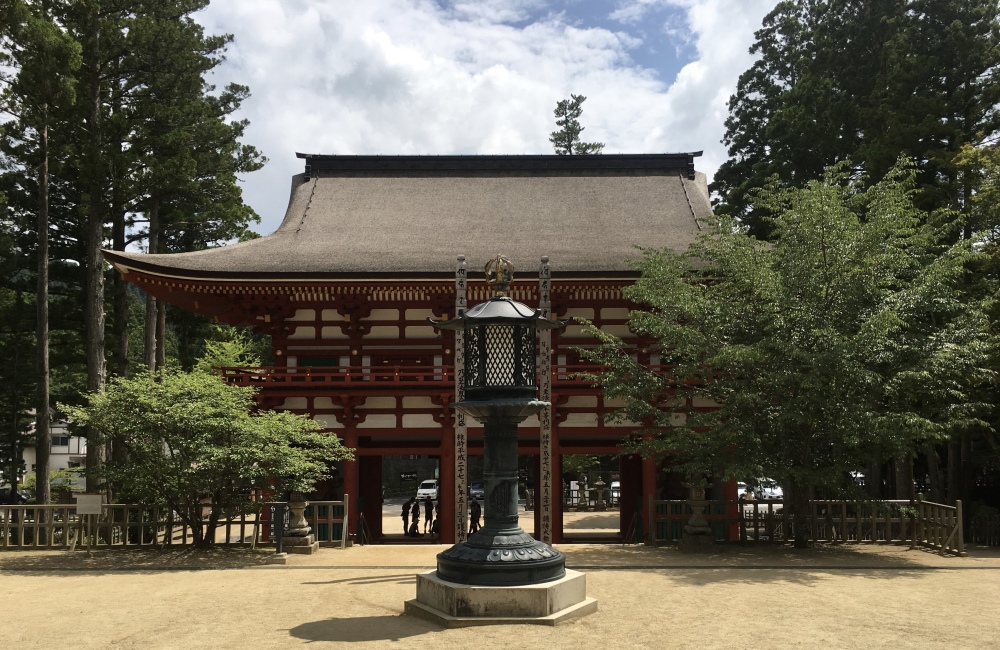
back side of Chumon

Details of the Kondo
The Kondo enshrines a statue of the Medicine Buddha that is not displayed, flanked by two large hanging mandalas, each with its own separate altar. Wall paintings show the eight offering bodhisattvas in the corners, and a large mural of the Buddha’s enlightenment is on the north side of the Kondo.

inside the Kondo

inside the Kondo
Inside the Kondo are wall paintings and murals.
The hexagonal shaped Rokkaku Kyozo was built in 1159 to house a complete copy of the Buddhist scriptures, written in gold ink. The building was lost in the fire of 1843, was rebuilt in 1884, and was lost again in the fire that destroyed the Kondo in 1926. The existing building was rebuilt in 1934. The 1884 building could be revolved, but only the present building’s outer rim can be revolved.
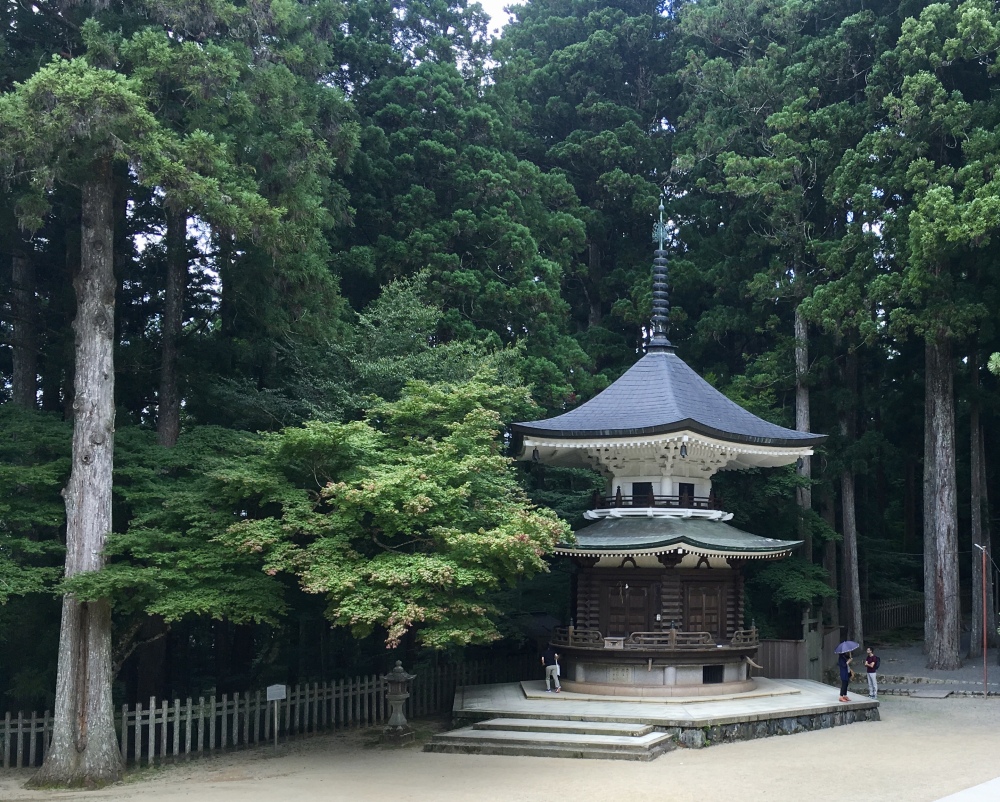
Rokkaku Kyozo
Konpon Daito, or the Great Fundamental Pagoda, is the tallest building in Kōyasan. After Kūkai was granted the use of Kōyasan by Emperor Saga in 816, he decided to build the first monastic complex entirely dedicated to the teaching practice of Esoteric Buddhism. He planned to construct two large two-story pagodas diagonally behind the Kondo in the eastern and western directions. Plans called for the Konpon Daito to be about 48.5 meters high, and because of its great size it was finally completed in 876, about 40 years after Kōbō-Daishi entered eternal meditation.

Konpon Daito, the stupa on the east side of the Kondo
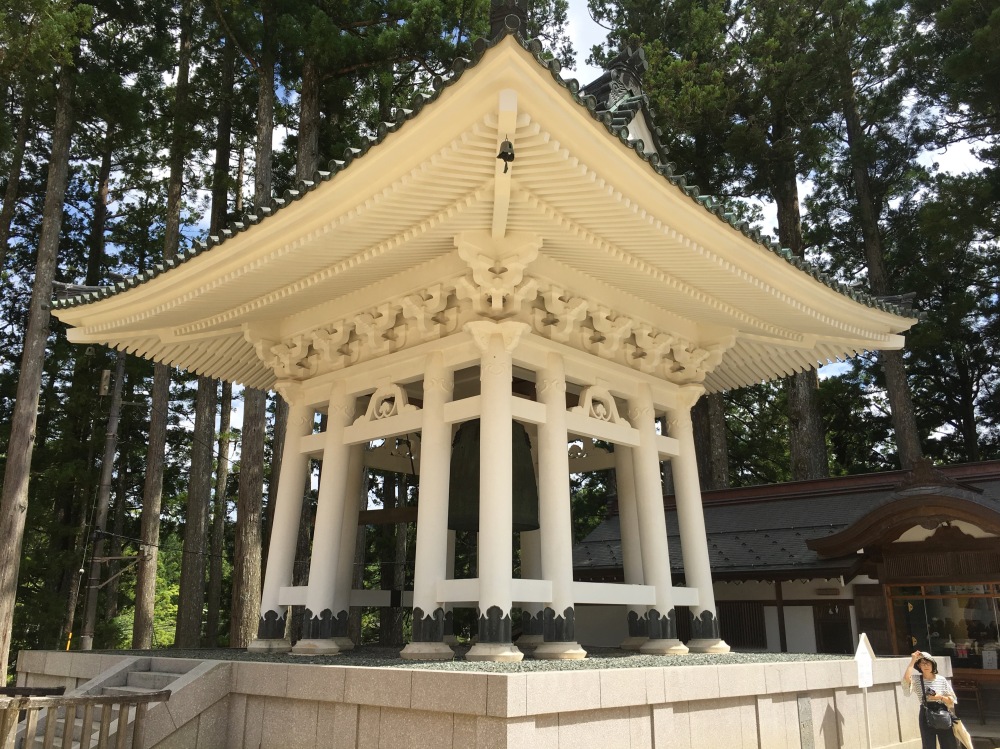
Shoro Belfry at Dai Garan
In later centuries the Konpon Daito was destroyed in fires caused by lightning strikes five times, and rebuilt each time. After the great fire of 1843, only the foundation stones remained. The existing building was rebuilt in 1937 of ferro-concrete with wooden overlays painted in vermilion because of the long history of fires. The building was last renovated in 1996.
The body of the pagoda is circular, with a square lower story with an attached pent roof and walls. The majestic Konpon Daito has the exact dimensions today was when it was first built. It enshrines a three-dimensional mandala, with large gilt wooden statues of Dainichi Myorai (Mahavairocana) of the Taizokai (Matrix Realm) surrounded by the Four Buddhas of the Kongokai (Diamond Realm), with the Sixteen Great Bodhisattvas painted on the sixteen pillars around them. Sadly no photography is permitted.
Konpon Daito is known as a symbol of Kōyasan.
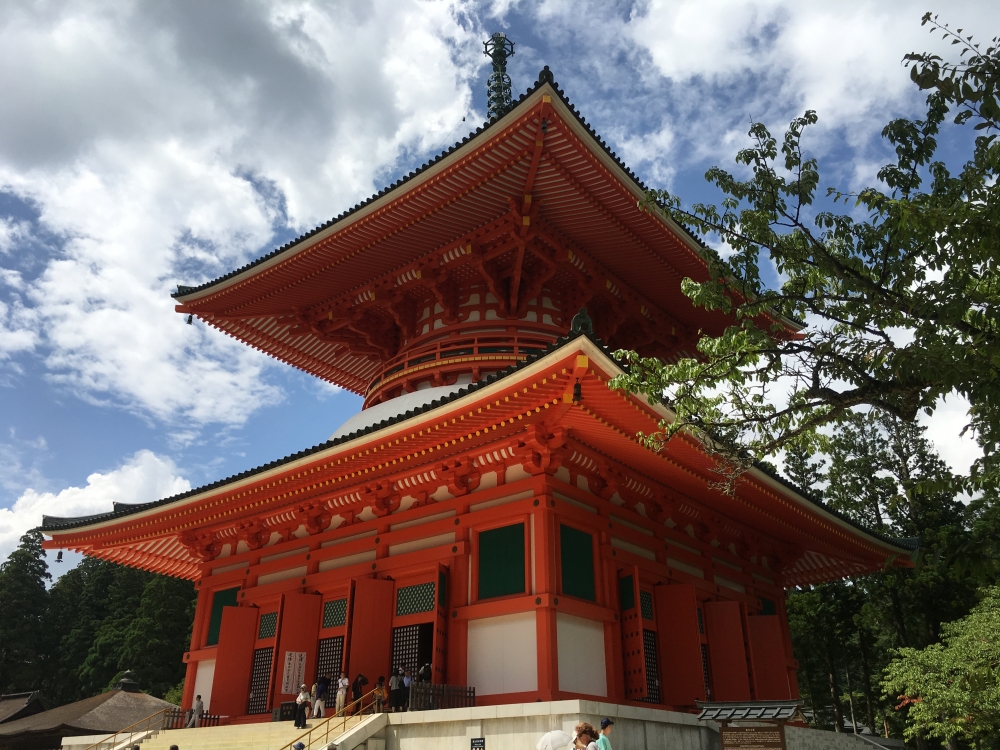
Konpon Daito

hall at Dai Garan
The Tōtō (Eastern Stupa) was completed in 1127 at the wish of the retired Emperor Shirakawa. The main deity enshrined is Vikiranosnisa, who is flanked by two wrathful deities. The pagoda that had been rebuilt in the Edo period burned to the ground in 1843, and the present building was reconstructed some 140 years later, in 1983.

Tōtō (Eastern Stupa)

Tōtō (Eastern Stupa)

Konpon Daito

Konpon Daito

bronze lantern and Kondo

a monk walks by the bronze lantern

hall at Dai Garan

pavilion at Dai Garan
Myō-jinja is home to Niu-myōjin, the royal mistress of Mount Kōya, and her son Kariba-myōjin, hunter guardian of the mountain’s forests. Most of Dai Garan is shaded by soaring black cedar trees.
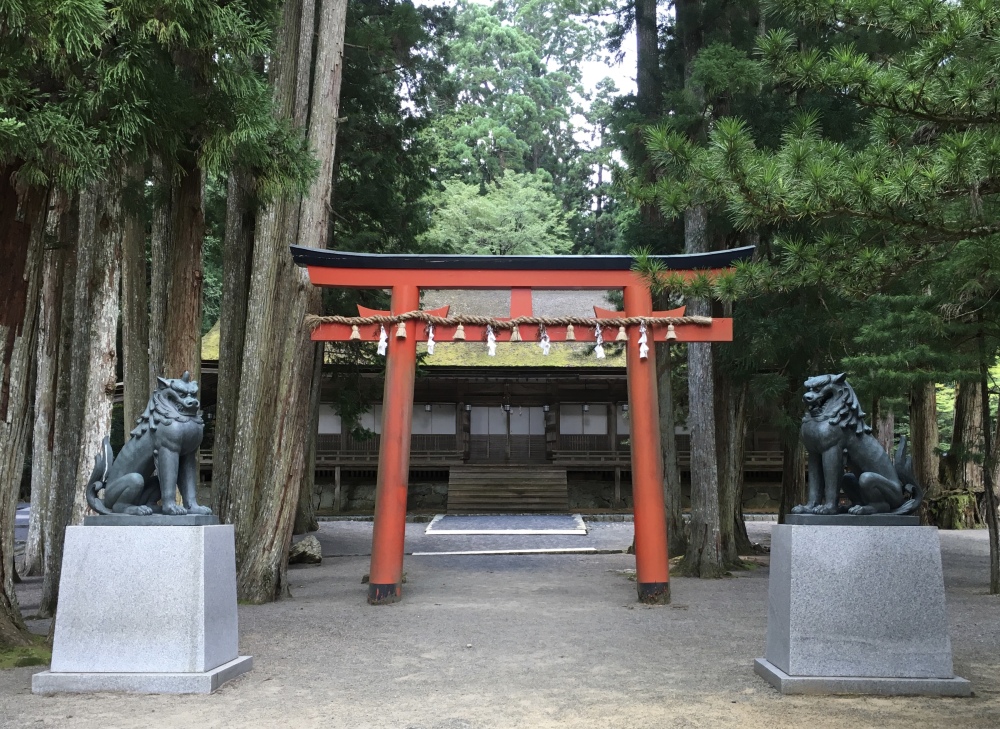
torii at entrance to Myō-jinja

Sannoin
The Saito, or Western Stupa, was originally built in 887, according to the instructions of Kōbō-Daishi. The present structure is the fifth reconstruction of the original building, and was built in 1834. The 36 pillars inside, plus the central pillar, represent the 37 deities of the Kongokai Mandala. Five Buddhas are enshrined here, with the central Buddha being Mahavairocana of the Kongokai surrounded by four Buddhas of the Taizokai. This demonstrates the teaching of the non-duality of the two mandalas.
I always love the older buildings that haven’t been rebuilt in ferro-concrete, like this one, although I know fires have destroyed these wooden buildings many times.

The Saito, or Western Stupa

The Saito, or Western Stupa

tree roots at Dai Garan

Konpon Daito
I wander over the red bridge to the islet in the center of the Lotus Pond.
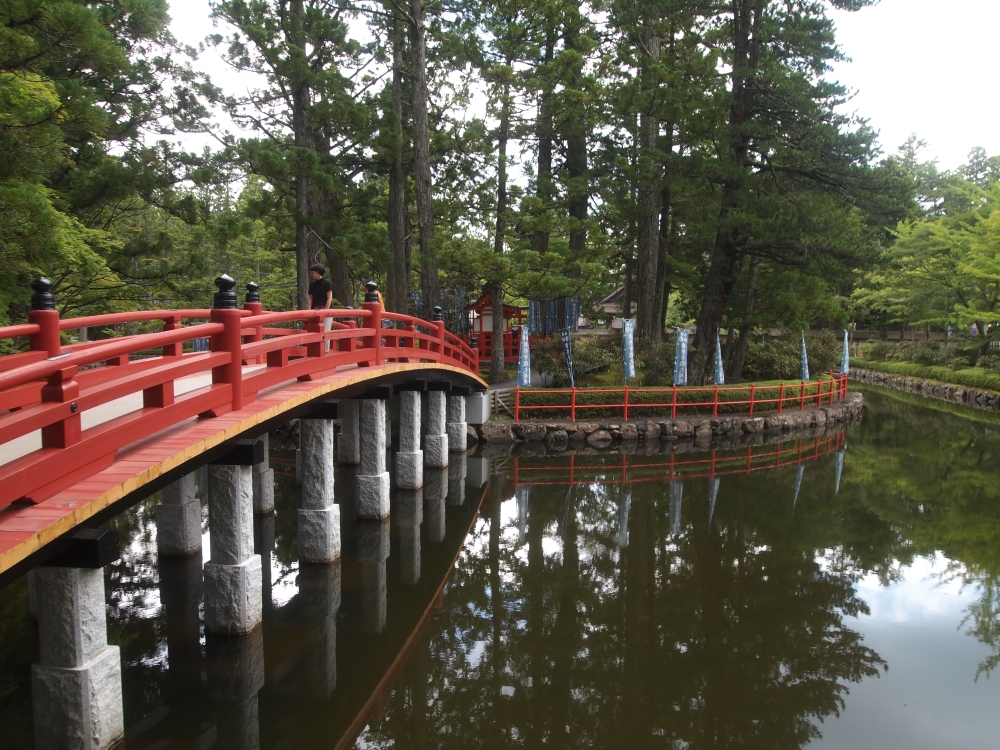
bridge over lotus pond
On the small islet is the Zennyo Ryuo Shrine, which enshrines a queen of the Naga, or dragon gods, believed to be most powerful in answering prayers relating to water and rain. This shrine originated when a monk prayed to the queen for rain during the drought of 1771.

Zennyo Ryuo Shrine
Situated at the west end of the basin of Koyasan, the Daimon, or Grand Gateway, is the western entrance to Koyasan from Kinokawa Valley and Aritagawa Valley. The gateway was reconstructed in 1705. It was recently repaired when the motorway opened.
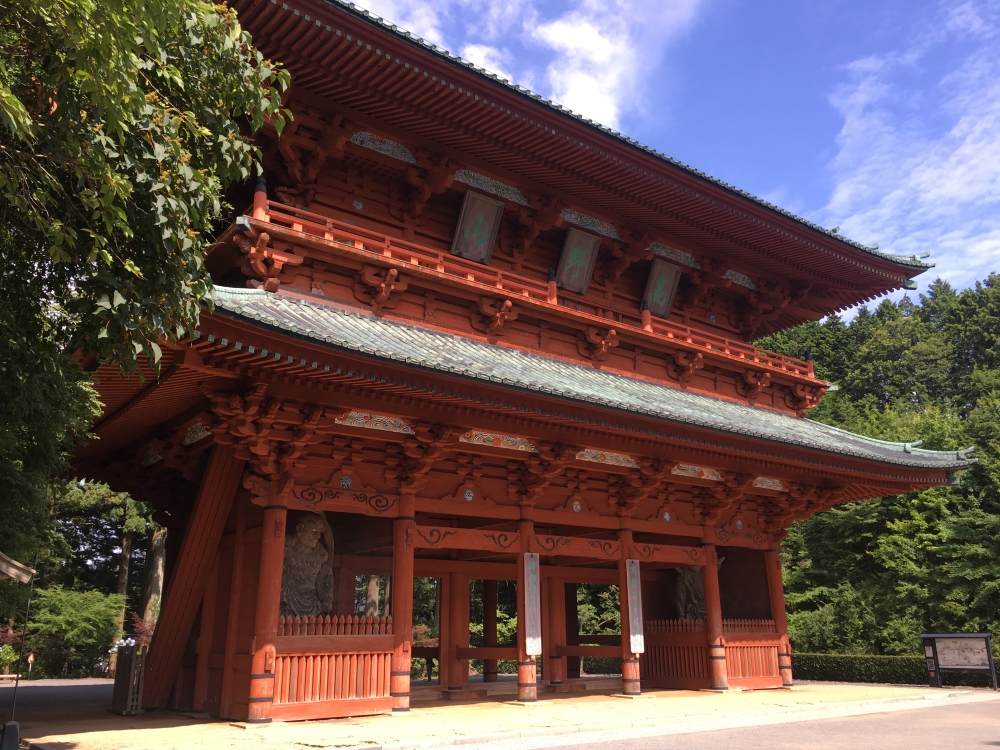
The Daimon, or large entrance gate, to Dai Garan
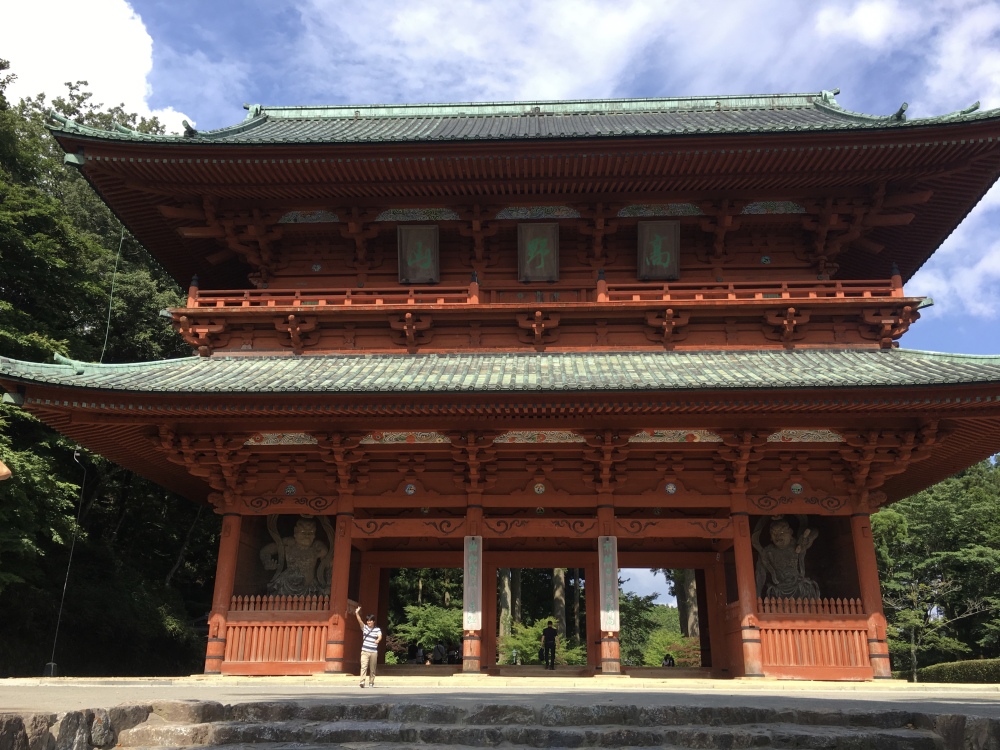
The Daimon
Inside the two main pillars of the gates are fierce looking Niō statues, guardians of this sacred area.
Temple Stay at Kongo Sanmai-in
After exploring all around Dai Garan, I walk back to Kongo Sanmai-in, where I can check in for the night.
Temple lodgings, or shukubō, are Buddhist temples that offer overnight accommodation to pilgrims and tourists. Open to both practitioners and non-practitioners, shukubō offer travelers a chance to experience the austere lifestyle of Buddhist monks while staying in historic temple buildings. In addition, visitors are usually invited to watch or participate in activities such as morning prayers or meditation (Japan-guide.com: Temple Lodgings). Of 117 temples on Koyasan, 52 of them offer lodging for overnight guests.
Kongo Sanmai-in is also considered a ryokan, or traditional Japanese inn. It has a bathhouse, multi-course dinners, communal spaces where guests can relax, and rooms with woven-straw flooring and futon mats.
The temple was built in the year 1223 by a widow named Hojo Masako, wife of the feudal lord Minamoto Yoritomo. She is said to have been the most powerful woman in Japanese history. Madam Masako became nun Nyojitsu after her husband died. She protected Kongo Sanmai-in Monastery by appointing a head priest, donating manors to the monastery, and encouraging Buddhist learning by establishing a school for learning. Yasumori, her vassal, supplied the priests with scriptures and commentaries on wooden block printing.
Kongo Sanmai-in is one of the most expensive places I stay during my time in Japan. It costs me 14,540 yen, or ~ $134. Dinner and breakfast are provided, and we are able to participate in the morning Buddhist ceremony. I have a small tatami-matted room to myself with a private bathroom. The whole experience is well worth the price.

Kongo Sanmai-in
After I settle into my air-conditioned room with private bath, I walk around to explore the grounds before dinner. I find the beautiful two-story Hato tower, dating to the 13th century.

stupa at Kongo Sanmaiin

stupa at Kongo Sanmaiin
The black cedar trees at Kongo Sanmai-in are ancient and majestic.

cedar trees at Kongo Sanmaiin

cedar trees at Kongo Sanmaiin
The Shisha Myojin Honden Shrine, a Shinto shrine housing the tutelary deity of Kongo Sanmai-in Temple, is inscribed with the date 1552.

Kongo Sanmaiin Temple Shisha Myojin Honden Shrine

Kongo Sanmaiin Temple Shisha Myojin Honden Shrine

path uphill
Like the stupa, this scripture repository building was also built in the Kamakura period. It is a rare example of the traditional azekurazukuri style, a simple wooden construction used in buildings like storehouses (kura), granaries, and other utilitarian structures. It is characterized by joined-log structures of triangular cross-section, and is commonly built of cypress timbers.

scripture repository

scripture repository

rakan at Kongo Sanmaiin

Kongo Sanmaiin
I walk through the polished wooden halls of Kongo Sanmai-in and then through the interior courtyard garden. This is truly a comfortable and serene temple for a temple stay!

inside Kongo Sanmaiin

painted screen at Kongo Sanmaiin
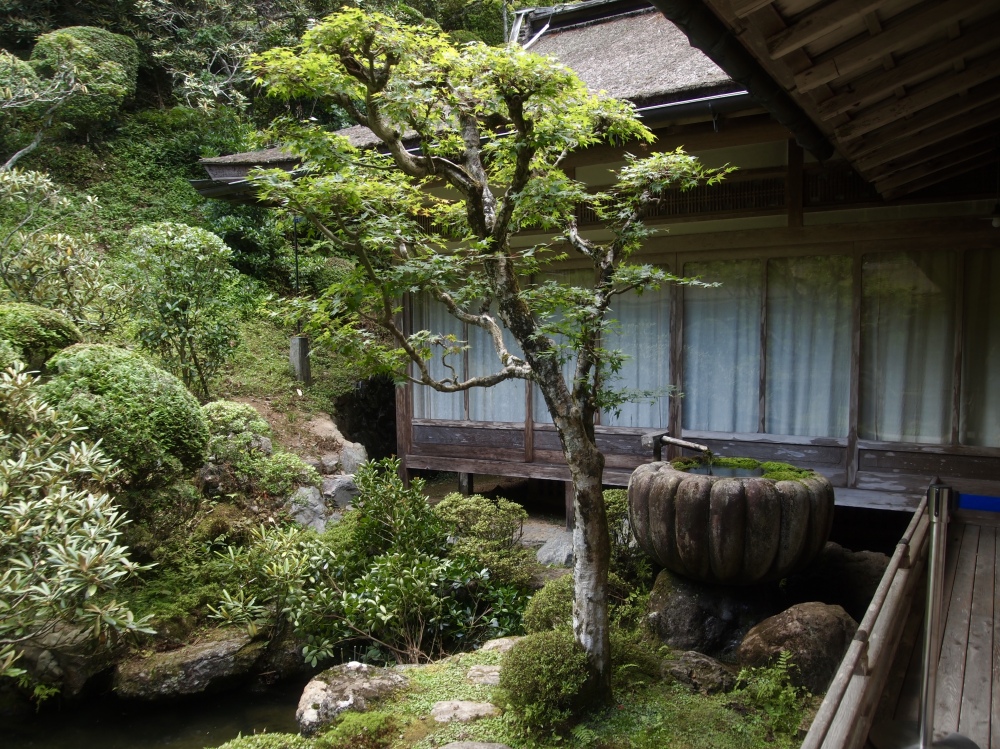
garden at Kongo Sanmaiin

garden at Kongo Sanmaiin

garden at Kongo Sanmaiin
I finish walking the grounds of Kongo Sanmai-in.

Kongo Sanmaiin
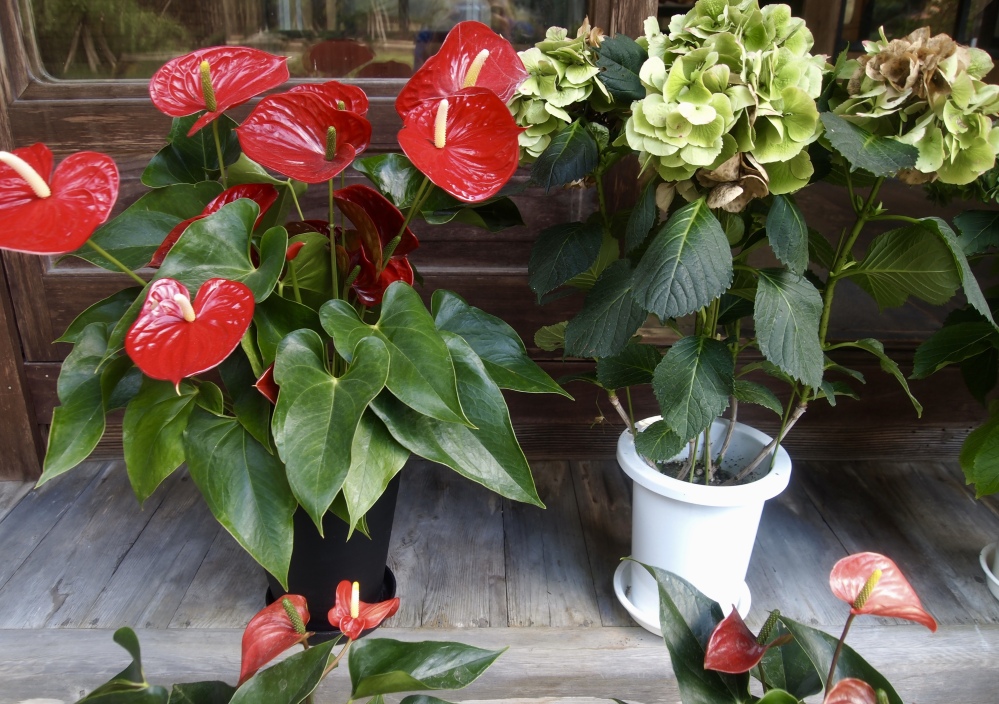
flower pots on the steps of Kongo Sanmaiin

pagoda at Kongo Sanmaiin

pagoda at Kongo Sanmaiin

pagoda at Kongo Sanmaiin
After my stroll around the grounds, I buy a beer from a vending machine and relax in my room while waiting for dinner. I had been wondering if alcoholic beverages would be served in a temple, so I’m pleasantly surprised to find several vending machines offering an array of choices.
At dinnertime, I join the other guests in a communal tatami matted room, where we’re served a Buddhist vegetarian meal or shojin-ryori. I enjoy tempura vegetables, miso soup, seaweed, beans, steamed vegetables, hot noodles, tofu, rice and mushrooms, all artistically presented. For dessert, watermelon and kiwi.
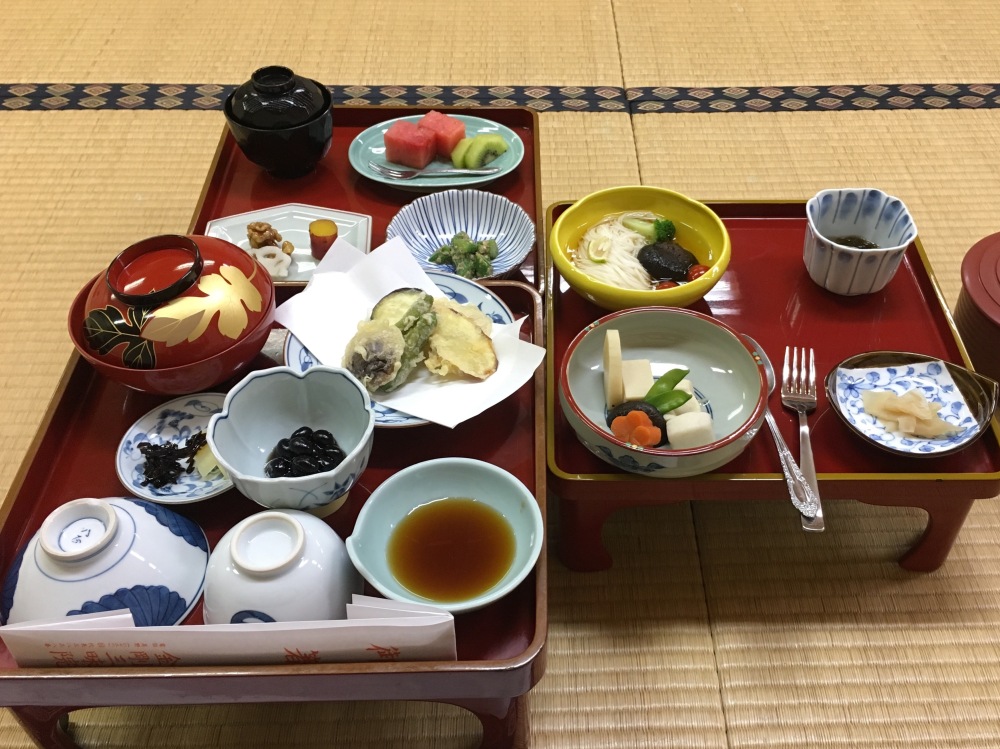
vegetarian meal at Kongo Sanmaiin
After dinner, I take an evening walk in Koyasan. The streets are pretty deserted at this hour.
Later, I enjoy the communal onsen, or Japanese bath, and then go to sleep early. In the morning, I’ll awake before daybreak to attend the Buddhist Sunday morning ceremony.
Total steps today: 14,804 (6.27 miles).































